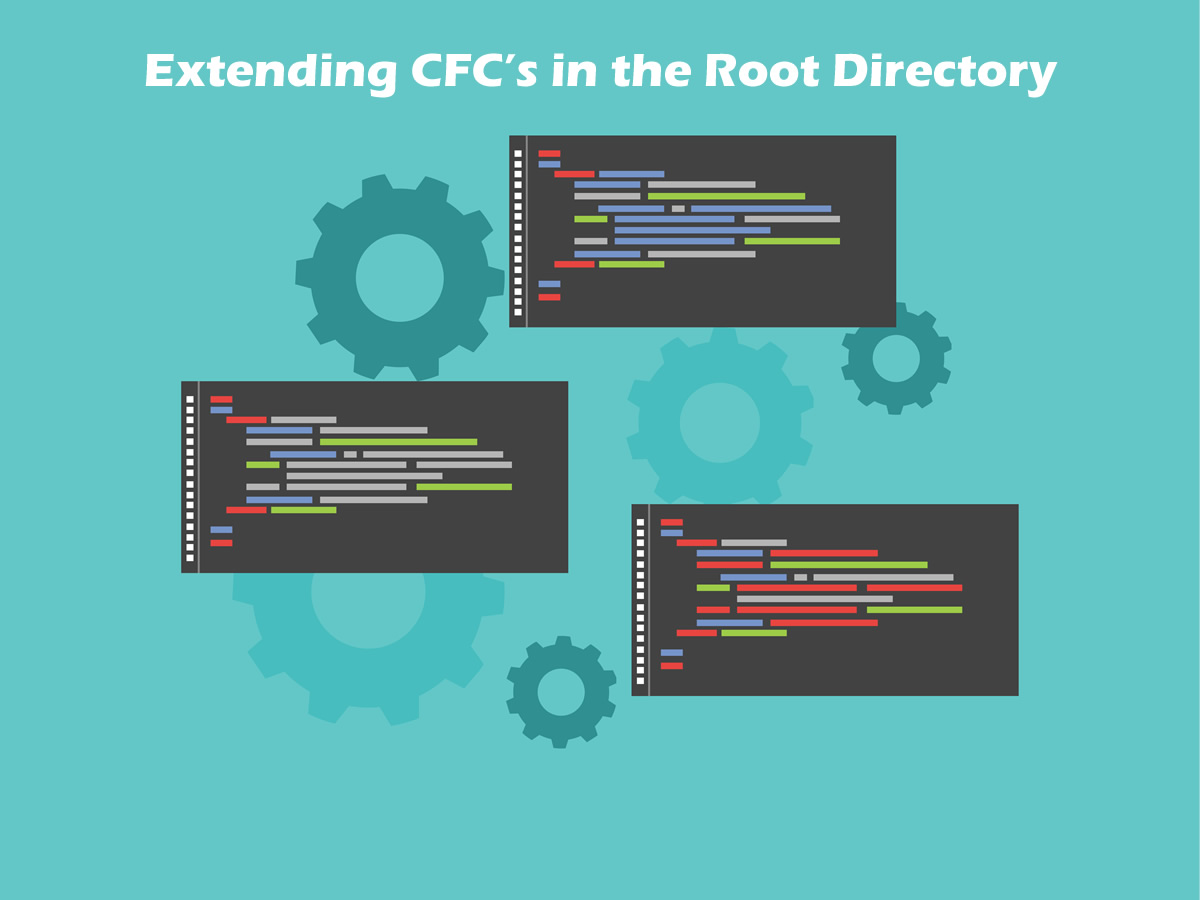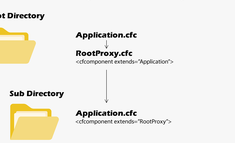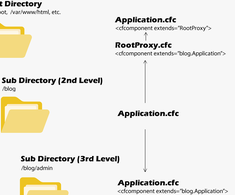Extending ColdFusion and Lucee Application CFCs in the Root Directory
|
Oct 8 |

The application framework in Adobe ColdFusion and Lucee is quite powerful; however, there are some complications when trying to extend functionality to application components that reside in the web root directory. I wrote an article years ago on this topic, but I want to revisit it using modern versions of ColdFusion and Lucee and expand upon it.
Table of Contents
ColdFusion Component Inheritance
ColdFusion components use the extends attribute to implement a relationship between two components using object-oriented inheritance.
The child component using this extends attribute will become a child object that inherits all the methods and properties of the parent component being extended. This creates a typical class-based hierarchy that follows the 'A' rule (a dog is an animal) and promotes code reusability
The implementation of this inherited relationship using the extends attribute is quite straightforward:
<cfcomponent extends="Application">You can extend ColdFusion/Lucee components in many ways. I personally use dot notation as I would when invoking a component. For example, if the component that you want to extend is in the same directory, specify the name of the CFC in the extends attribute. If the cfc is in a different directory, such as the blog directory, simply use extends="blog.application". However, as we will see, things get tricky when trying to extend application.cfc's to and from the root web directory.
Problems When Extending Application.cfc's in the Root Directory
ColdFusion and Lucee have issues when trying to extend an application.cfc from the web root directory. The problem appears that ColdFusion and Lucee are not able to distinguish the application.cfc in the root directory. This issue has been present since 2005.
Adobe ColdFusion 2023 raises the following error: 'The Application component or interface cannot extend itself.'
Lucee's error is a bit more cryptic: java.lang.StackOverflowError unkown source'.
However, as I mentioned in one of my previous articles, there are solutions to this issue, which I will expand upon in this article.
Extending the Root Application.cfc from a Sub Directory
If you need to extend the Application.cfc, which resides in the root directory, you need to use a proxy component that lives in the root directory alongside the application.cfc. The root Application.cfc extends to the proxy in the root directory, and the child application.cfc in a subdirectory extends the proxy component in the root directory.
Components in Root Directory
Application.cfc The parent application.cfc in the root directory does not have an extends statement.
RootProxy.cfc
The empty RootProxy.cfc, also in the root directory, extends the application.cfc. You can name this component anything you want; it just needs to extend the parent application.cfc. Note this component is empty (you can put comments in it though):
<cfcomponent extends="Application">
</cfcomponent>
Child Application.cfc in Sub-Directory
The child component in a subdirectory extends the RootProxy.cfc (or whatever name you chose for the proxy) in the root directory.
<cfcomponent sessionmanagement="yes" clientmanagement="yes" output="yes" extends="Proxy">
Click on the thumbnail below for an illustration.
Extending an Application.cfc Within a Sub Directory to an Application.cfc in the Root Directory
The directory structure does not govern the parent-child relationship. A parent component can be located in a subdirectory. In contrast, the child component can be placed in the root directory and we can flip the previous example upside down when extending a parent CFC, found in a subdirectory, to the root directory.
In this scenario, we will invert the previous example to extend an application inside a subdirectory to the application.cfc in the root directory using a proxy.cfc. Click on the thumbnail below to illustrate how to extend application.cfc's bi-directionally:
Things to Watch Out For
There are a few things to watch out for when using this approach to extend to/from a root directory. First, for some reason, dynamic application names will not work. You must hard-code your this.name in your application.cfc.
<cfset this.name = "GalaxieBlog4" />Additionally, any custom Java code loaded using JavaLoadPaths may not function within the child application, and you should employ a different approach when loading custom JAR files. For example, if an error occurs when loading your .jar file to load a custom library, place the jar file in the lib directory of the ColdFusion root instead.
Further Reading:
- Original Solution by Sean Corfield (using the wayback machine): Extending Your Root Application Cfc
- Ben Nadel: Extending The Application.cfc ColdFusion Framework Component With A Relative-Path Proxy
- Extending the Root Cfc
- Stack Overflow post by Edward M Smith
Related Blogs
|
|
Gregory Alexander |
|
Hi, my name is Gregory! I have several degrees in computer graphics and multimedia authoring, and I have been developing enterprise web applications for the last 25 years. I love web technologies and the outdoors and am passionate about giving back to the community. |
|
This entry was posted on October 8, 2025 at 10:34 PM and has received 699 views.
Comments
There are 2 comments.
Show Comments| #1 by Gregory Alexander on October 13, 2025 at 12:05 PM |
|
|
| #2 by Tjarko Rikkerink on October 10, 2025 at 11:10 PM |
|
|



